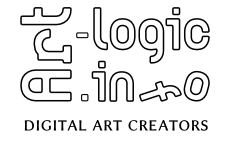Which equipment for view camera ?
The photographer using large formats can of course use a brand new equipment if her/his purse affords it. However, the market of secondhand objects enables to find bargains and to equip oneself at low cost. This equipment, which is flexible (as long as you follow with the same brand) is made of :
– A camera obscura : Classical formats are 4x5inch (10x12cm) and 8x10inch (20x25cm). After those formats, we’ll talk about ultra large formats. Two types exist : monorail camera, quite heavy with loose moves (perspective controls) and is destined for works in studios or folding cameras, most of the time wooden, relatively light and destined to outside work (landscapes).
– A lens : Large format lenses have fixed lenghts. Their image circle should be chosen depending on the format of the negative and on the amplitude of the camera that you want to use. Classical, telephoto or macro types exist. Generally, they are sold on an adapted shutter.
– Film holders : Sunproof film holders contain sheet films. Each of them can contain 2 films (1 on each face).
– Sheet films : A great variety of large format films exist. (negative or slide, black or white, colour, infrared, ...) with various sensitivities (from 25 to 300 ISO-film speed) and sizes. Unlike contained views on roll film, every sheet film can be processed separately, what enables you to modify its sensitivity curve.
– A veil : Essencial to focus efficiently on the viewfinding.
– A foot : Except camera with photoshots taken by the hand (like graflex), a stable foot is essencial.
– A ball head : It links the foot to the camera and have to be adapted to the weigh of the camera.
– A spotmeter : It enables you to mesure the light on the different zones of the scene, in order to choose the length of photoshots and the length of processing (technique of zone system).
Processing large formats :
Non-digital labs still offer the processing of sheet films but since this offer is pretty rare, prices are dissuasive, even more if you want photographs in color. The best solution is to equipe yourself with a small lab in your bathroom. A cheap equipment, weither it is for black or white, is only made of basins, chimical products and tins to stockpill. The most expensive is finally the time invested in mastering the process. Once this step is done, the laboratory photographer can play on the formulas of revelator, the temperature and the time of processing to optimize her/his negative.
Printing large formats :
The service offered by laboratories is quite expensive too. For normal size negatives (10x12cm),
A good deal is to have your own equipment (enlarger and accesories : magnyfing glass for clearness, timer, basins and tins, chimical products) via secondhand market. For larger negatives (20x25cm), contact print (so without enlarger) with which you will obtain large enough photographs, and you will access to alternative processes such as platen / palladium printing. For coloured pictures or large formats printing, negatives can also be scanned or printed via digital tools.
Réferences
Pierre-Jean Amar, La photographie, histoire d’un art, Edisud.
Pierre Groulx, La photographie en grand format, Modulo.
Philippe Bachelier, Noir et Blanc, de la prise de vue au tirage, Editions VM.



